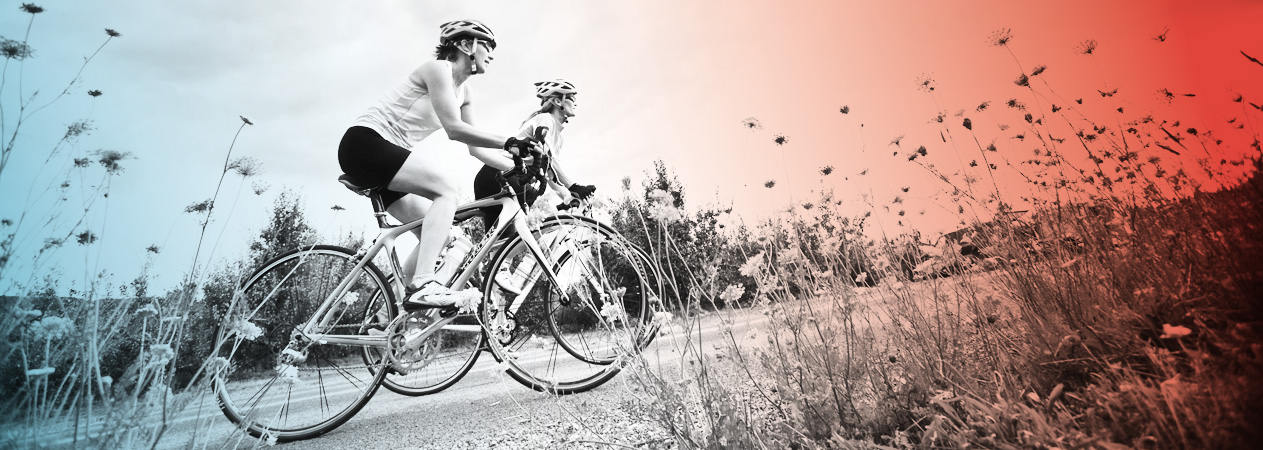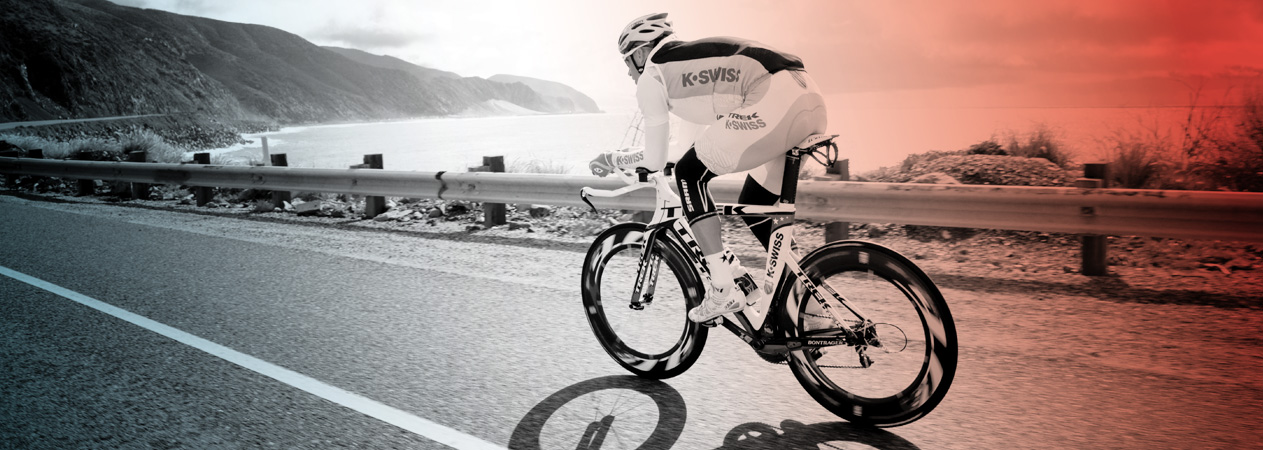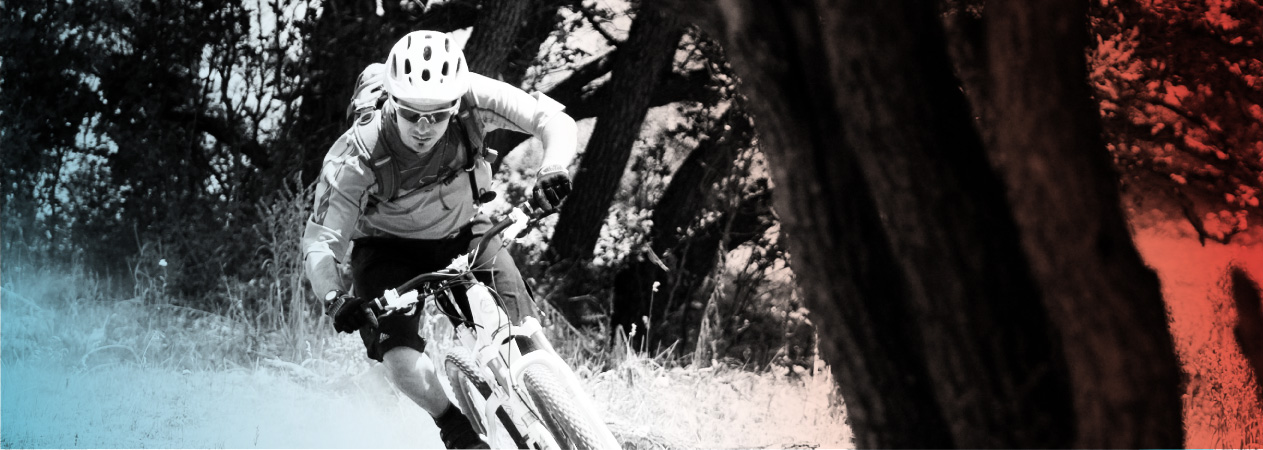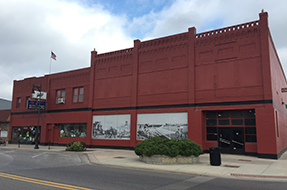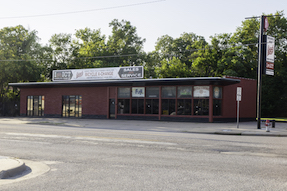Whether you are riding to the corner store or across the country, you should be comfortable on your bike. If you have neck, back, or knee pain, saddle sores, or hand or foot numbness, your bicycle probably doesn’t fit you properly. Good bike fit can also improve your pedaling efficiency and aerodynamics and actually make you faster. Here are the basic bike-fitting principles:
Adjusting the Saddle
Your bike seat should be level to support your full body weight and allow you to move around on the seat when necessary. Too much upward tilt can result in pressure points. Too much downward tilt can make you slide forward while riding and put extra pressure on your arms, hands and knees, which can lead to injury.
To adjust the seat height, wear your biking shoes and riding shorts and place your heels on the pedals. As you pedal backwards, your knees should fully extend in the down position. If your hips rock side to side the seat is too high. Now when you move your foot into the proper pedaling position, with the balls of your feet over the pedal, you’ll have a slight bend in your knees.
You can also adjust the seat forward and backward (fore and aft position). With your feet on the pedals so the crank arms are parallel with the ground, the proper position will put your forward knee directly over the pedal axle. Dropping a plumb line from the patellar tendon makes this adjustment a bit easier to see.
Handlebar Adjustment
If the handlebars are too high, too low, too close, or too far away, you may have neck, shoulder, back, and hand pain. A proper reach allows you to comfortably use all the positions on the handlebars and to comfortably bend your elbows while riding. There are other, more advanced adjustments you can make, such as changing the handlebar width or height.
Because your body is asymmetric (one leg or arm may be slightly longer or shorter than the other) an ideal bike fit is often a matter of trial and error. The slightest imbalance can lead to pain. Here are some common complaints and possible solutions.
Knee pain is usually associated with a seat position that is too high or low or far forward or back. Improper bike shoe or cleat position can also cause knee pain.
- A seat that is too high will cause pain in the back of the knee.
- A seat too high will also cause your hips to rock side to side, which may cause discomfort.
- A seat that is too low or too far forward may cause pain in the front of the knee.
- Improper foot position on the pedal (or improper cleat alignment) can cause pain on the inside or outside of your knees.
Individual anatomy may also result in knee pain. Cyclists with slight differences in leg length may have knee pain because the seat height is only adjusted for one side. Shoe inserts or orthotics can help correct this problem.
Another cause of knee pain is using too high a gear. Try to use a gear that allows you to pedal quickly, from 70 to 100 strokes per minute.
Neck pain is another common cycling complaint, and is usually the result of riding a bike that is too long or having handlebars that are too low. Tight hamstring and hip flexor muscles can also cause neck pain by forcing your spine to round or arch, and your neck to hyperextend.
Foot pain or numbness is often the result of wearing soft-soled shoes. Special shoes designed for cycling have stiff soles that distribute pressure evenly over the pedal. This also helps you pedal more efficiently. Foot pain can also be caused by using too high a gear, which results in more pressure where the foot meets the pedal.
Hand pain or numbness can be prevented by wearing padded cycling gloves that provide cushioning. You should ride with your elbows slightly bent, not straight or locked. Bent elbows will act as shock absorbers and help absorb the bumps in the road. Changing hand positions on the handlebars can also reduce pressure and pain.
Saddle sores: Finding a bike seat that fits you well is imperative.
There are dozens of bike saddles designed for every rider and riding style. Saddles come in a variety of materials from gel to leather. There are women-specific saddles that are shorter and wider to accommodate a woman’s wider pelvis. Others have a center cutout to relieve pressure on soft tissues. You should try several to find one that fits you well.
Your cycling clothing can also cause saddle sores. Cyclists typically wear shorts made without seams — and no underwear — to eliminate sources of chafing and pressure points. Cycling shorts also have padded liners that provide more comfort than street clothes.

